By Chef Mikko Laukkanen
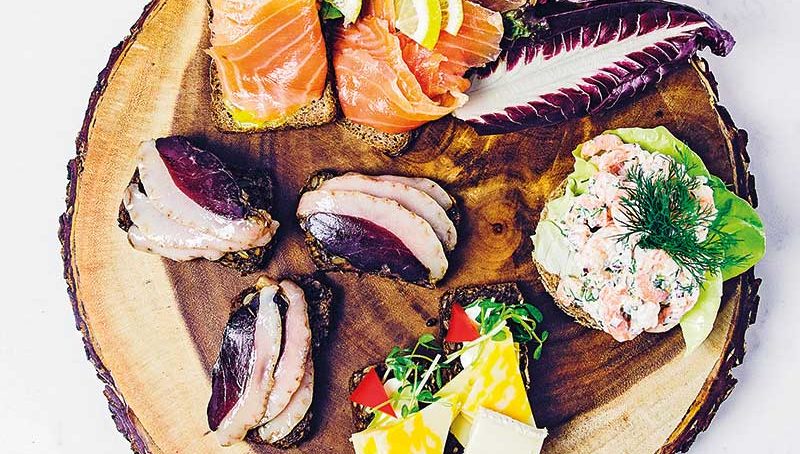
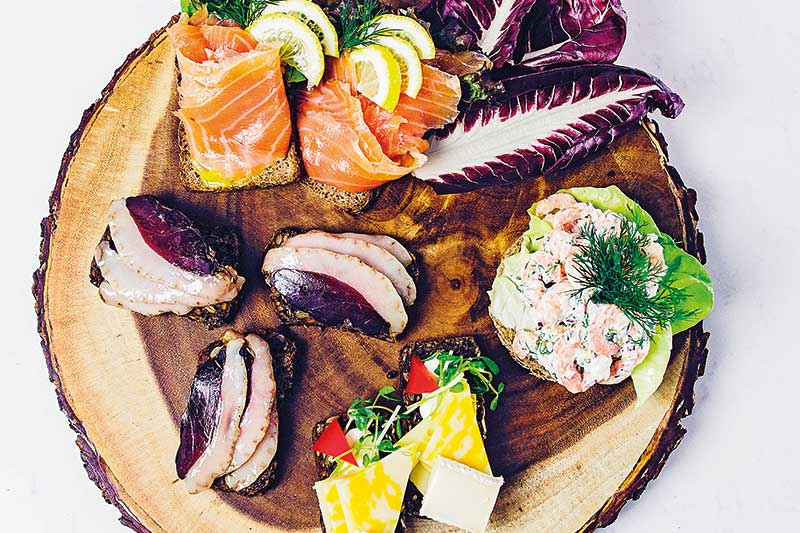
ICELAND
HN explores a regional cuisine that has gone from being largely unknown to gradually generating global interest among chefs and foodies alike over the past decade, due to its extreme simplicity, focus on seasonality and vibrant colors
There has been a general absence of Mediterranean cuisine in Iceland, a reality that had been bothering chef Þráinn Freyr Vigfússon for some time, until one day, he decided to do something about it by teaming up with another Nordic chef. Together, they opened Sumac Grill, named after the tangy condiment commonly used throughout the Middle East and Africa region.
What part have experience and context played in making you the chef you are today?
A lot; experience gained while traveling has made me a more confident chef in doing new and simple things, and not always complicating things or sticking to doing things the way I’m used to. I’ve taken a lot from my trips abroad when working or volunteering in restaurants in the US, France, UK, Sweden and Italy, learning from each kitchen their customs and traditions.
We’ve heard that you use Lebanese and Moroccan ingredients in your Icelandic food. What was behind that decision?
I fell in love with them. I found the North Africa and Lebanon cuisines to be very interesting, so I started to look them up and travel to those countries, seeking out restaurants with these culinary styles in every city I visit. Of course, at Sumac we’re not cooking authentic Lebanese or North African cuisine, but fusion cooking, where we’re using Icelandic ingredients and spicing things up with some of the techniques and traditions from these countries.
Simplicity and complexity are often intertwined in cuisine. On balance, which side do you lean toward?
I usually side with the simple dish, though sometimes it takes time to prep. Then it’s about adding some more subtle flavors that take time to make in a sauce or garnish. The guest doesn’t see the work in that, but only tastes it.
Does true creative expression involve mastering a recipe or making something new?
For me it’s making food better – making it tastier and playing with the senses. With this in mind, mastering a recipe that’s old or new and making it more interesting is my passion.
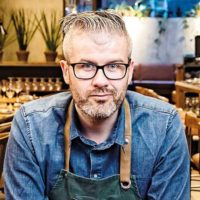
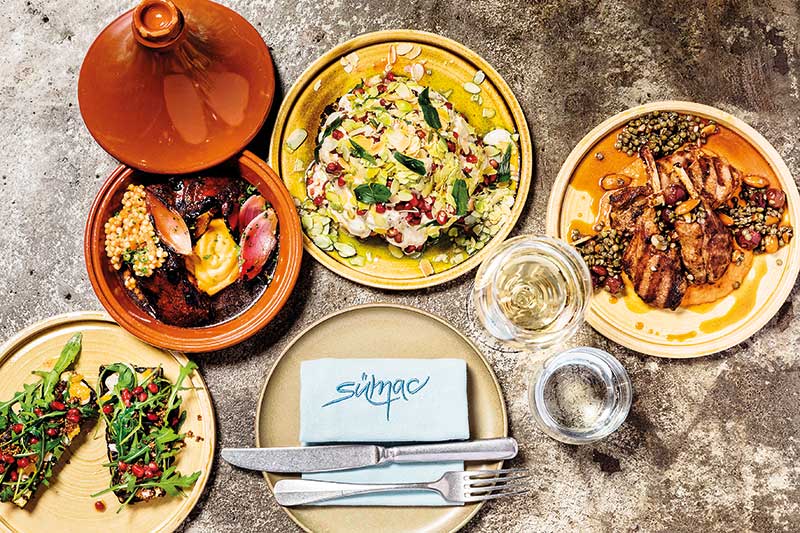
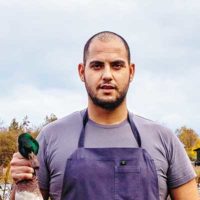
DENMARK
As far back as he can remember, chef Tarek Alameddine was fascinated by his mother’s culinary creations, which over time he mastered and used, never thinking that one day, these would lead to him working beside René Redzepi, co-owner of the two-Michelin star restaurant Noma and one of the world’s greatest chefs
How did a man from Lebanon’s Chouf region land a cooking job alongside one of the world’s greatest chefs?
Cooking was initially a way for me to release stress and enjoy food. It wasn’t until I started majoring in business that I realized it was my true passion. Following this passion, I obtained a culinary arts degree from Les Roches via the Royal Academy of Culinary Arts Jordan. During that time, Noma was the restaurant associated with all the reinvention and interpretation of Nordic cuisine, which intrigued me. I applied twice because I wanted to learn from Chef Redzepi’s vision and the way he puts a menu together, focusing on local and seasonal ingredients, as well as developing his own style and techniques throughout.
How do you employ techniques from back home to dishes created at Noma and what role do fresh ingredients play?
Recently, the Noma Fermentation guide was published and included a recipe that incorporated techniques we use back home to prepare basic foods like hummus. Another dish I prepared was a paste inspired by the mhamara which was made with lacto-fermented plums, charred tomatoes, blackcurrants and wood oil. This dish would not have been possible, were it not for local ingredients.
What similarities and differences have you noticed when comparing Nordic and Lebanese cuisine?
The Nordic and Middle Eastern regions clearly enjoy different climates, which tremendously impact their produce. To circumvent these, people from each area devised their own fermentation techniques. The real difference is that in Lebanon, we are privy to produce from various regions, unlike Nordic cuisine, which has more diverse ingredients, but with a much shorter seasonal availability. When trying to showcase a certain ingredient, the feeling of going back home, to my roots – the feeling of Lebanon and the food I enjoyed growing up is what inspires me to create. It is the ingredient that pushes the process to a more or less complicated method.
Who is your biggest influence and what challenges do you face in translating your ideas?
Without a doubt, Chef Redzepi greatly influenced my career and the way I look at food in the kitchen. Innovations, from new culinary techniques to shifts in food policy discussed at the MAD symposiums in Copenhagen, are undoubtedly eye-opening experiences. On a different note, my inspiration also comes from Lebanese culture and ingredients. That is why we, as a people, need to start creating a fine-dining scene in Lebanon, to celebrate our ingredients. Actually, if we dig deep into our history, we can find many techniques that demonstrate a potential for recreation and reinterpretation of dishes. Jmesh, for example, is widely known in the mountains and inspired me to use it in making a slow-cooked quail leg, like a confit, with a sauce made of chicken and pine.
Simplicity and complexity are often intertwined in cuisine. On balance, which side do you lean toward?
Creating a dish is never as easy as it seems. Translating ideas into dishes requires an intense trial-and-error process. I usually start with an idea and end up with a dish that is different to what I had in mind. That is why it’s important to have an open mind when creating something and accepting constructive criticism in order to elevate the dish.
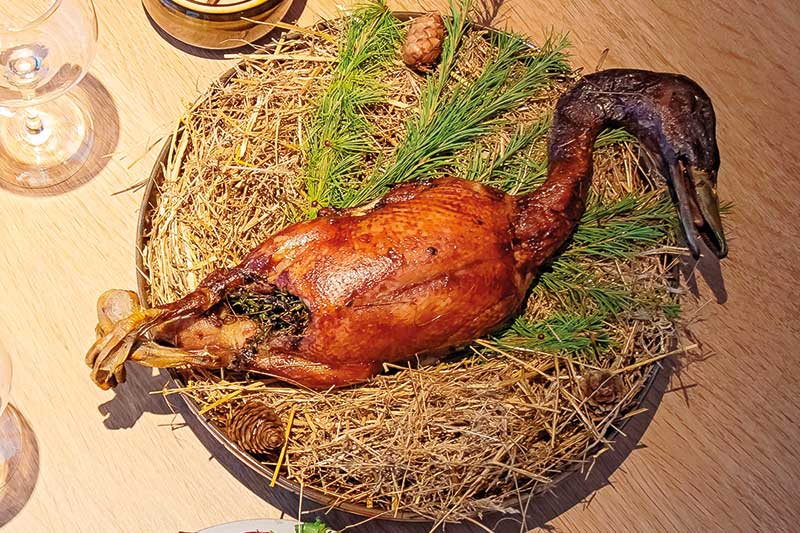
SWEDEN
Swedish chef Titti Qvarnström is the second Nordic woman to date to receive a Michelin star, as co-owner and head chef of Bloom in the Park restaurant in Malmö. The natural beauty of Southern Sweden is her major source of inspiration, which she continues to draw on and evolve with the aim of sharing it with the wider world
What part have experience and context played in making you the chef you are today?
I have a very close connection with Scania, the region where I grew up. It greatly affects how I cook and my wish is to put a small piece of Scania on every plate that I serve.
What added value does a Michelin Star bring to the table?
The guide does not add value as such, given that neither the chef nor restaurant have anything to do with the handing out of stars. That is why my focus continues to be on the everyday work, which is what I live for.
What role does simplicity play in creativity?
I find it sad that some view nature’s miracles as simple ingredients, when the real job of a chef is to not mess up great produce. A good chef will know how to bring out the best of an ingredient. Unfortunately, chefs will often not know how to prepare the most common produce, either due to a lack of skills or simple neglect. Keep in mind that perfection is more often found in the less manipulated foods. I therefore prefer to keep the produce as close to its origins as possible, which often means putting a lot of work into the dish, as simplicity can be the hardest art form to master.
What differentiates what you do in terms of the ingredients and techniques you use?
I follow my heart in cooking, putting great effort into minimizing waste. Also, bear in mind that we are now an entire generation of Nordic chefs, tasked with reinventing Nordic cuisine to better fit today’s standards.
Does knowing the history of an ingredient affect how you use it?
It certainly does, especially since to bring out the best in produce, one must know and understand its provenance. This is especially important when working with small-scale and local producers, as the quality of the product will change with the season. This is something one has to work with rather than against.
How do you describe your cuisine?
My cuisine is a take on the land that I love, using what it has to offer and respectfully applying new and old methods of preparing, cooking and preserving. My ambition is to serve a small piece of this region and a small piece of my heart on every plate, being humbled by the trust and confidence my customers put in me, which is a very intimate thing.

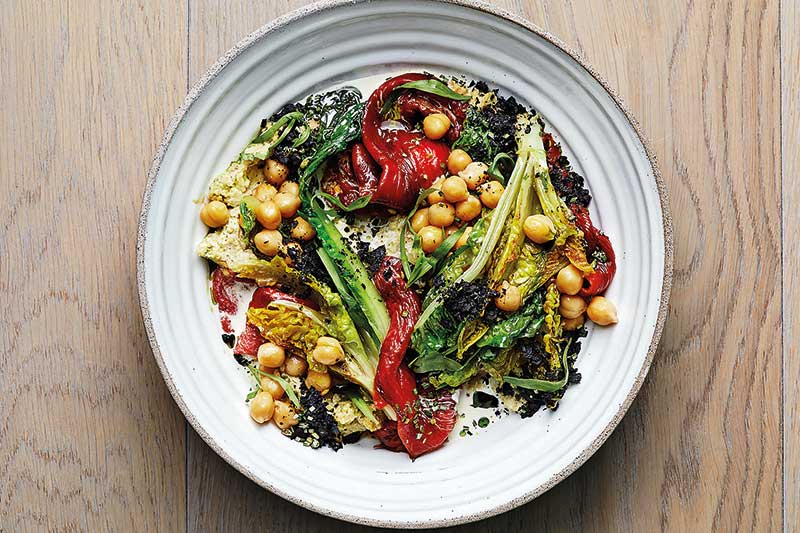
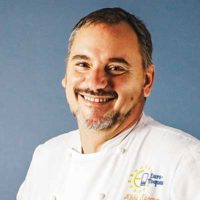
FINLAND
Throughout his career, Finnish chef Mikko Laukkanen has prepared Nordic cuisine for ambassadors, politicians and royalty across the world, receiving numerous accolades for his masterful creations
Creating a simple dish can be complicated and vice versa; your thoughts?
There is undeniable elegance in simplicity. Nordic cuisine is a return to the basics through nature. Everything is in season, nothing contains processed sugars, fats or ingredients you can’t find naturally occurring. We strive to use organic produce and preserve the environment along the way, by using fully green products, no single use plastics and recycling everything imaginable.
Who has been your greatest influence and what remains your biggest challenge?
My aunt, who has a restaurant in Stockholm, has had the greatest influence on me and the challenge is getting the right ingredients to make food the way we do back home.
What differentiates what you do from other chefs?
I happen to use lots of smoke to cook anything from mushrooms and vegetables to fish and meats.
What does true creative expression involve?
Mastering a recipe is one thing, but allowing yourself out of that comfort zone will see you thinking differently about how to try integrating dissimilar items into a single dish to eventually arrive at something unique.
Every kitchen is run according to a certain hierarchy; what is yours?
Some chefs prefer not to get involved until the dish is ready for that final touch before being served. I, however, prefer to be part of the entire process irrespective how big or small.



















